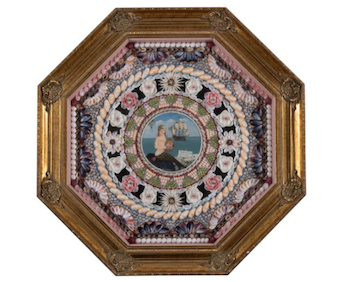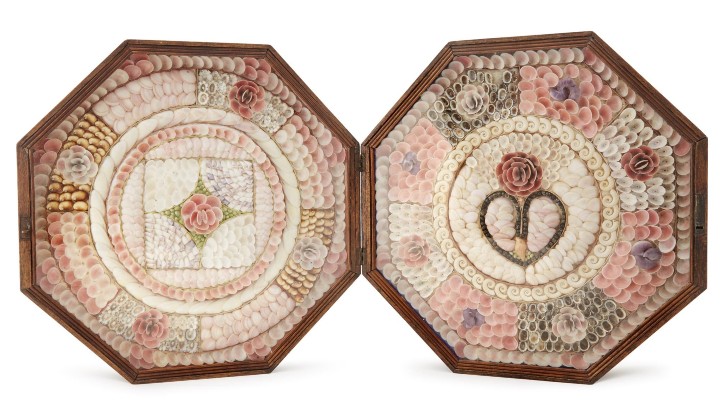
NEW YORK – A Valentine’s Day gift often consists of chocolates and flowers but in the 19th century, the tradition of sailors valentines was born. While the name conjures up visions of sailors making these during downtime while aboard ships, the reality is they were made by islanders, mostly in Barbados, starting in the mid-1800s. Barbados was a major port of call along trading routes and sailors would buy these valentines as gifts for loved ones back home, whether sweetheart, mother or sister, hence their name.
Sarah Johnson, director of the Cahoon Museum of American Art in Cotuit, Mass., who curated a 2019 exhibition on sailor valentines, said Barbados, at the easternmost part of the West Indies, was a center of supply and distribution to ships in the 18th and 18th centuries. It was a final port of call for many sailors heading home to either New England or Europe.
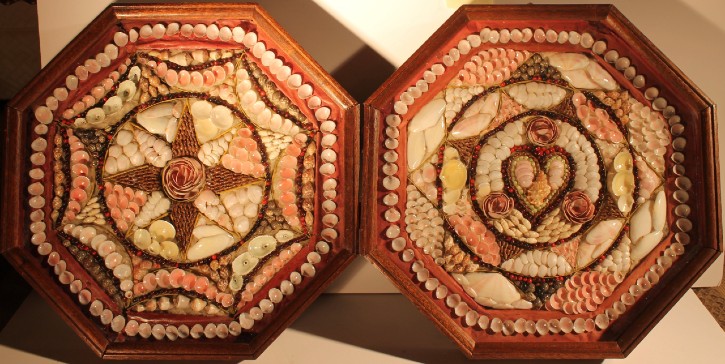
“On the last stop before home, sailors gathered provisions, repaired their vessels and strolled the streets to shop for souvenirs to bring home to loved ones,” she said. “Brothers George Gordan and Benjamin Hinds Belgrave, who owned Belgrave’s Curiosity Shop in Bridgetown, Barbados, catered to this market. Barbados was densely populated and while most found work in the sugarcane industry, some local merchants and other islanders worked in cottage industries supplying the tourist trade.”
Belgrave’s employed island women to fashion native shells into valentines for sale, circa 1830 and 1880, she noted.
Usually octagonal in shape, these cased valentines were made of hundreds of tiny colorful shells arranged in a pleasing design, using dividers to separate colors into patterns and borders or in the form of stars, hearts or flowers. Large ones were usually 13½ to 14 inches across, and small ones measured 9 inches across. They were made as singles or double valentines, which had a hinged clasp so they could close on each other for safe travel.
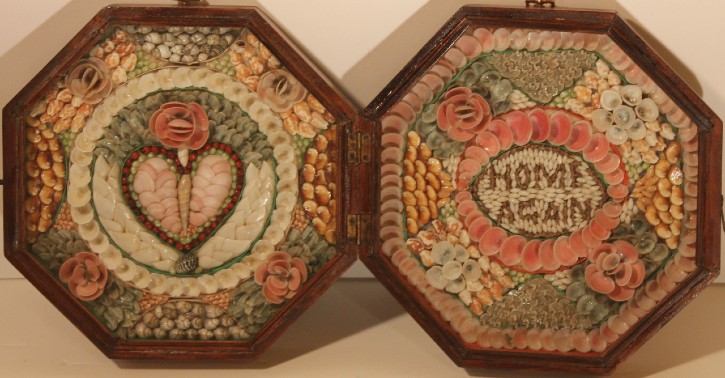
Most sailor valentines were backed with colored paper (often purple that faded to a beautiful deep rose over time, but some were backed by silk. Silk was more delicate and often would have to be replaced years later with paper. Rarer still, a few valentines used gold foil.
“I think shells, for centuries, have been fascinating to people. People collect shells, and sailors brought them home to their sweethearts, so it was kind of a romantic thing,” said antiques dealer Diana H. Bittel of Bryn Mawr, Pennsylvania, a longtime collector of sailor valentines. On occasion she has also made modern ones to give as gifts. “The smaller ones more often are the ones that have a motto [like Home or Gift from Barbados],” she said, noting that the larger ones seldom have words spelled out on them.
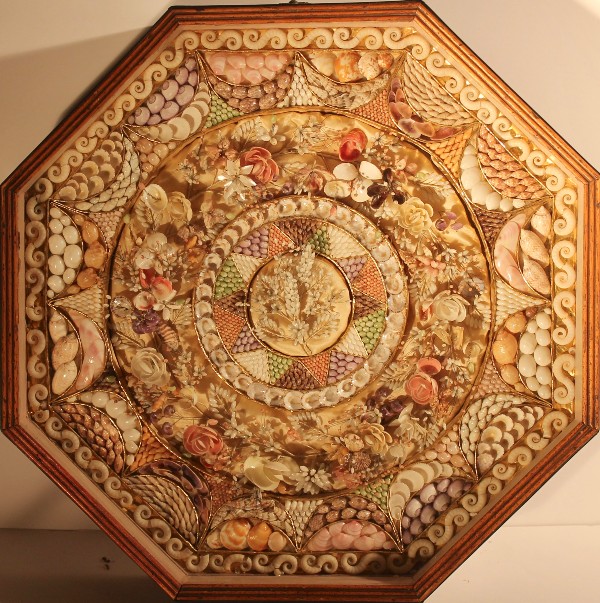
Classic imagery on doubles will feature a heart at the center of one and a compass rose on the other, the latter in keeping with a nautical theme. The most desirable examples are those with highly intricate shellwork and unusual designs. Valentines displaying a large rectangular cutout in the center may once have held a photograph of the sailor who gave the gift. Over time, the photograph was not of interest to subsequent owners, so the photograph was usually removed and the center embellished with shells, Bittel said.
“Where they start getting more exciting is when they have a basket of flowers in the center or a wreath of flowers running around the whole box,” she said. “Those, to me, are really exceptional. They are more expensive and harder to find, and the workmanship is just so gorgeous. It’s amazing that somebody would come up with this design using these tiny shells.” An elegant 19th-century example featuring a wreath and spray of flowers is in the collection of the Victoria and Albert Museum in London.
Johnson said the top practitioners of the art form dedicate enormous amounts of time creating highly innovative and dynamic compositions. “More value is assigned to pieces that have original designs and exceptional quality of workmanship,” she said. Some pieces have markings inside the cased edges indicating who they were gifted to, but the identities of their makers themselves are lost to history. “Historic examples of sailors valentines, created between 1830 and 1880, are anonymous. We do not know the names of the women who created these pieces for the trade. This would be an excellent area of future research,” she said. “There are many contemporary sailors valentines artists whose work is highly sought after by international collectors, particularly because of the rise of shows, including the annual Sanibel [Florida] Shell Show among others.”
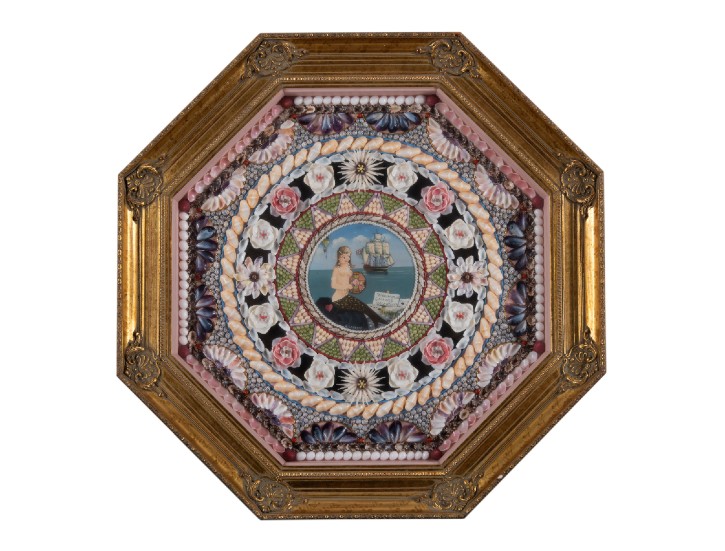
The tradition of sailors valentines continues today among contemporary artists and actually highlights a disturbing trend in the seashells available today. One of the most interesting things Johnson learned while researching the exhibition centered on the environmental context of the mollusks that create these extraordinary shells. “Current sailors valentine artists have access to shells from around the world, some of which were never known to early shell artists. However, some of the methods used to gather and market these shells involve mass harvesting that has a negative impact on ecosystems,” she said. “Many, if not all, of the contemporary sailors valentines artists believe that the quality of shells is declining, and one reported seeing deformed shells coming from Sanibel Island in the Gulf of Mexico, presumably impacted by oil spills and changing ecological conditions affecting the ocean.”
Long popular with collectors, sailors valentines are not only beautiful antiques and examples of fine workmanship but can also serve as a reminder of the fragility of ocean life.
# # #


